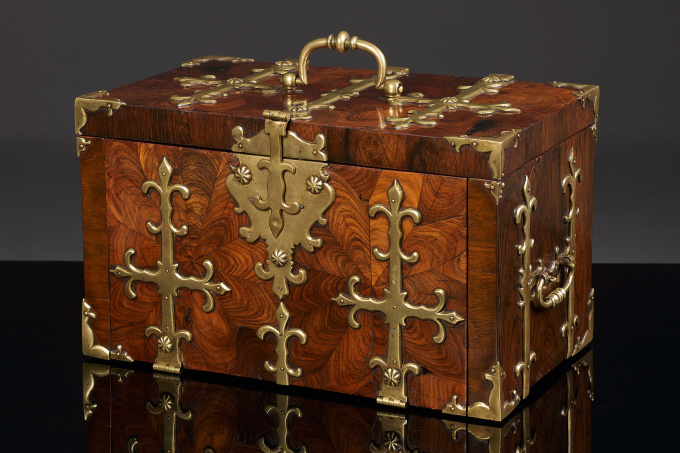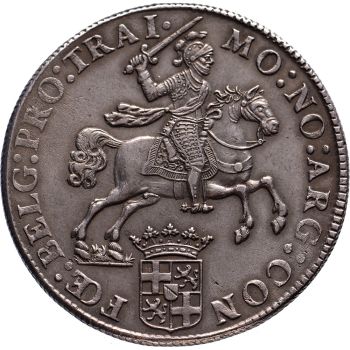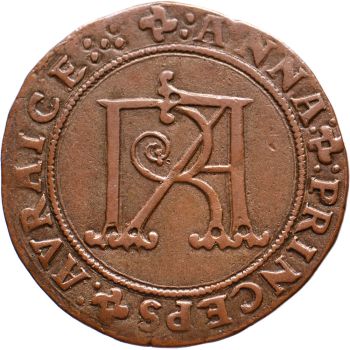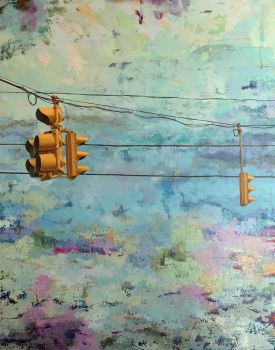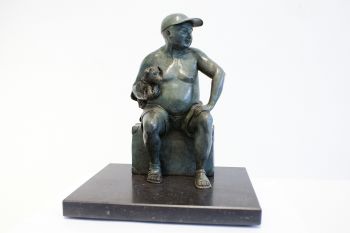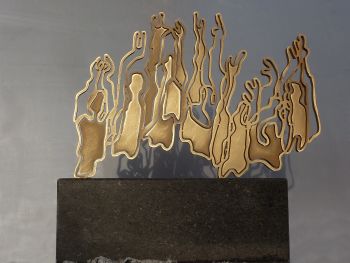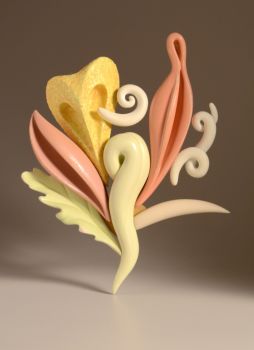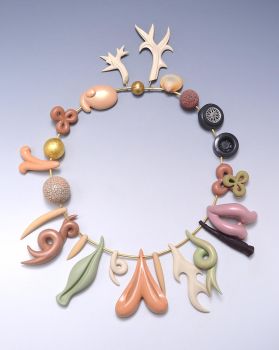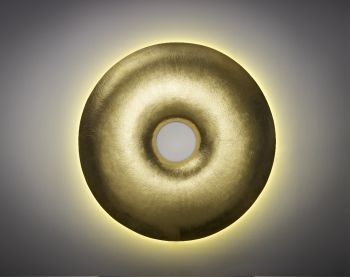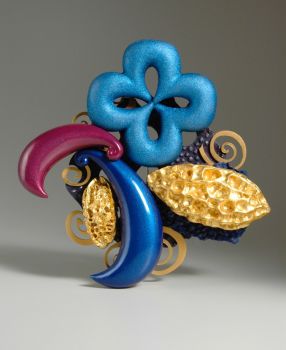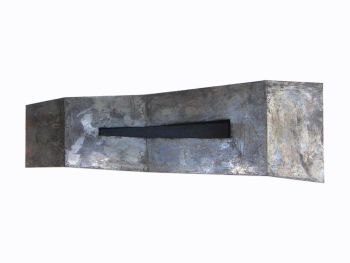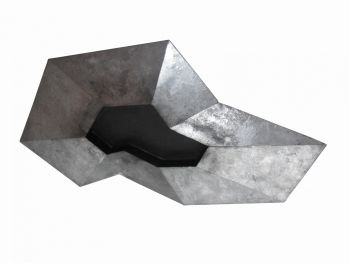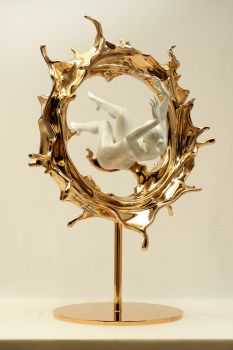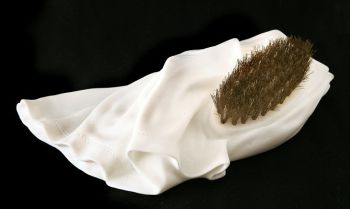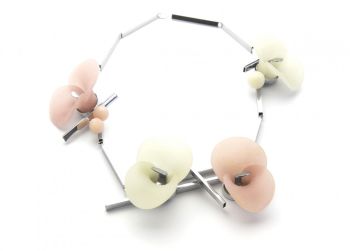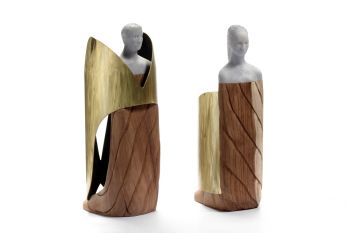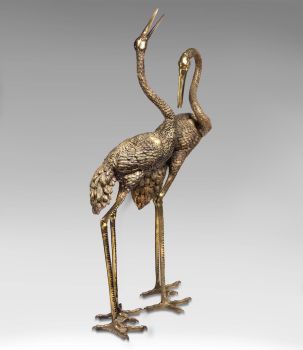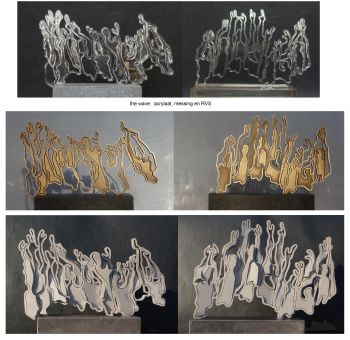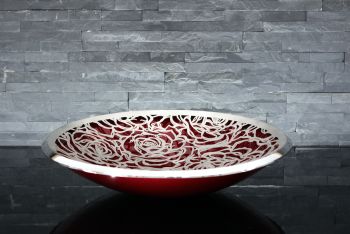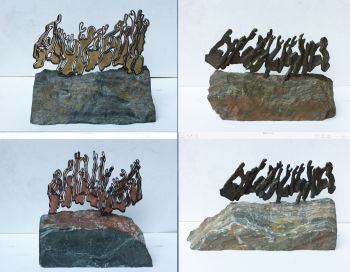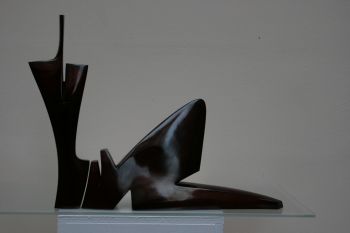Small Strongbox 1690 - 1700
Artista Desconocido
MaderaOlivaMetalPalo de rosaLatón
23 ⨯ 38 ⨯ 23 cm
ConditionExcellent
Actualmente no disponible a través de Gallerease
- Sobre la obra de arteAn oak travelling chest veneered with olive-wood and rosewood. The case is ornamented with brass fittings shaped in leaf motifs. The fittings prevented the case from being damaged during travel. The handlebars on the sides facilitate transportation. The central escutcheon has a concealed latch that needs to be unbolted before the actual keyhole is revealed. When the lid is opened, it gives access to the largest storage compartment. In the lid there is a cover to store letters or documents. In the compartment there are to concealed hiding places.
With a latch the front cover can be opened. This gives access to two drawers. When the drawers are removed, two further secret compartments can be reached. The entire interior is made out of rosewood and rosewood veneer.
Commonly this type of traveling chest, or strongbox, is presumed to be French or Flemish. Nevertheless, they are much more common in England than anywhere else. Recent research presumes that the bulk of these trunks is made in London between approximately 1660 and 1720.
The earliest proof of the manufacturing of this type of chest is found in inventory listings from the legacy of Edward Traherne, a renowned joiner and cabinet-maker, who died in London in 1675. Traherne’s trading stock contained a number of strongboxes and travelling chests with diverse specifications. Remarkably, some of these objects had not yet been completed. - Sobre el artista
Puede suceder que un artista o creador sea desconocido.
Algunas obras no deben determinarse por quién está hecho o por (un grupo de) artesanos. Algunos ejemplos son estatuas de la Antigüedad, muebles, espejos o firmas que no son claras o legibles, pero también algunas obras no están firmadas en absoluto.
También puedes encontrar la siguiente descripción:
•"Atribuido a …." En su opinión, probablemente una obra del artista, al menos en parte.
•“Estudio de….” o “Taller de” En su opinión, una obra ejecutada en el estudio o taller del artista, posiblemente bajo su supervisión
•“Círculo de…” En su opinión, una obra del período del artista que muestra su influencia, estrechamente asociado con el artista pero no necesariamente su alumno.
•"Estilo de …." o “Seguidor de…”. En su opinión, una obra ejecutada al estilo del artista pero no necesariamente por un alumno; puede ser contemporáneo o casi contemporáneo
•"Manera de …." En su opinión una obra al estilo del artista pero de fecha posterior
•"Después …." En su opinión, una copia (de cualquier fecha) de una obra del artista
•“Firmado…”, “Fechado…” o “Inscrito” En su opinión, la obra ha sido firmada/fechada/inscrita por el artista. La adición de un signo de interrogación indica un elemento de duda.
•“Con firma…”, “Con fecha…”, “Con inscripción…” o “Lleva firma/fecha/inscripción” en su opinión la firma/fecha/inscripción ha sido añadida por alguien que no es el artista
Artwork details
Related artworks
- 1 - 4 / 12
Artista Desconocido
A rare Japanese export lacquer medical instrument box1650 - 1700
Precio a consultarZebregs & Röell - Fine Art - Antiques
Artista Desconocido
Japanese transition-style lacquer coffer 1640 - 1650
Precio a consultarZebregs & Röell - Fine Art - Antiques
Artista Desconocido
UN NETSUKE MARINE MARFIL DE UN HOLANDÉS CON UN VENTILADOR CHINO18th century
Precio a consultarZebregs & Röell - Fine Art - Antiques
Artista Desconocido
PAREJA DE ANTORCHAS O VELAS DE TECA DORADA Y LACADA INDONESIA18th century
Precio a consultarZebregs & Röell - Fine Art - Antiques
Artista Desconocido
UN NETSUKE DE MARFIL DE UN HOLANDÉS CON UNA COCKEREL18th century
Precio a consultarZebregs & Röell - Fine Art - Antiques
1 - 4 / 24Artista Desconocido
Japanese transition-style lacquer coffer 1640 - 1650
Precio a consultarZebregs & Röell - Fine Art - Antiques
1 - 4 / 4Linda Verkaaik
The Wave 15/20/30 cm - acrylic/ brass/RVS2020
Precio a consultarGalerie Bianca Landgraaf
1 - 4 / 24

